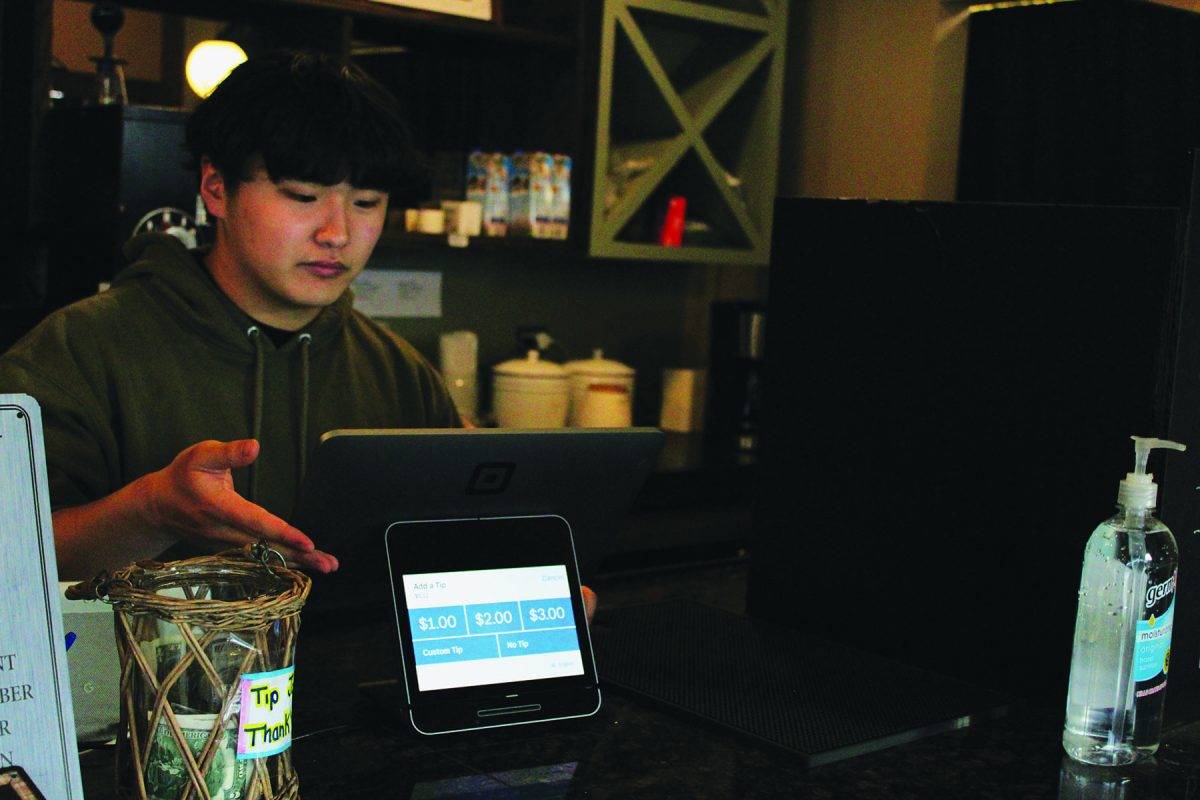As businesses have increasingly adopted contactless payment since the COVID-19 pandemic, Rachel Delgado, server at Butterhills Family Restaurant, has been experiencing a decline in the amount of tips she receives.
“Generally speaking, we get maybe 18 percent on a subtotal, not even the total of the bill with taxes, which we used to get more of the total of the bill, and we’d get 20, 21 [or] 22 percent,” Delgado said.
According to Matt Schulz, chief credit analyst with LendingTree, an online lending marketplace, tipping fatigue is an emotional response to frequent requests for tips.
“Tipping fatigue comes when people feel that they are being prodded, and even sometimes bullied, into having to tip,” said Schulz. “It really is all about being asked to or feeling forced or pushed into tipping in situations where you wouldn’t normally.”
Contactless payment makes it easier for any business to include a tip as part of the payment process.
“There’s no question that part of tipping fatigue is because more places are asking for tips now,” said Schulz. “And that’s partly because technology makes it easier to do so. So now, if a contractor or a plumber, or almost really any kind of business that allows you to pay through your phone or through another point-of-sale device that has tips built into that process, it’s completely understandable that that business would try to get a few more tips. But businesses should not be surprised when people are a little taken aback when they’re asked to tip in situations when they typically haven’t been in the past.”
According to senior Siena Dini, who works as a hostess at Basu Coffee Bar & Vietnamese Eatery, she has noticed fewer cash tips as more customers have chosen to pay and tip electronically. “We have a tip jar that gets split between the two people who are working the front of the cafe, and most people don’t leave tips in the jar,” said Dini. “If they were to tip, they leave it on the iPad. It leaves an option to tip 10, 15 or 20 percent. Most of the time, I would say, most people tip 10 percent.”
According to Jaime Peters, assistant dean of accounting, finance and economics at Maryville University, it is legal for employers in some locations to pay employees who receive tips as a form of their total compensation less than minimum wage.
“A tipped employee, by federal requirements, can be paid as little as $2.13 an hour compared to the minimum wage, which, in the state of Illinois, is close to $15,” Peters said.
Servers’ incomes are heavily dependent on tips in addition to the pay they earn from the establishment.
Delgado tips busboys and staff who tray her food a percentage of her tips, she said.
“When you work in fine dining, you’re tipping the bartenders, you’re tipping multiple people, so 5 percent of your tips are going to [the] back of the house, and if you’re not even getting 18 to 20 percent, you’re not getting minimum wage,” Delgado said.
According to Valerie Sokolosky, etiquette and image expert, a tip is designed to ensure prompt service.
“So if I’m getting service, whatever that means to me as a consumer, I should be willing to tip for that service,” said Sokolosky. “If it’s just a routine turn around and place a cup of coffee on a counter, then it’s more of an individual choice.”


